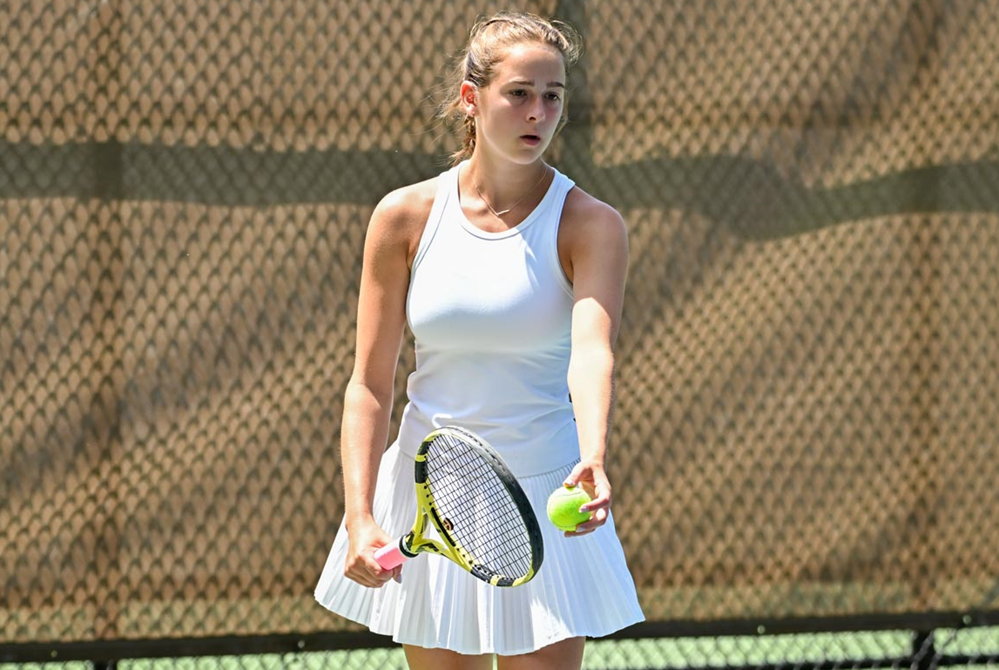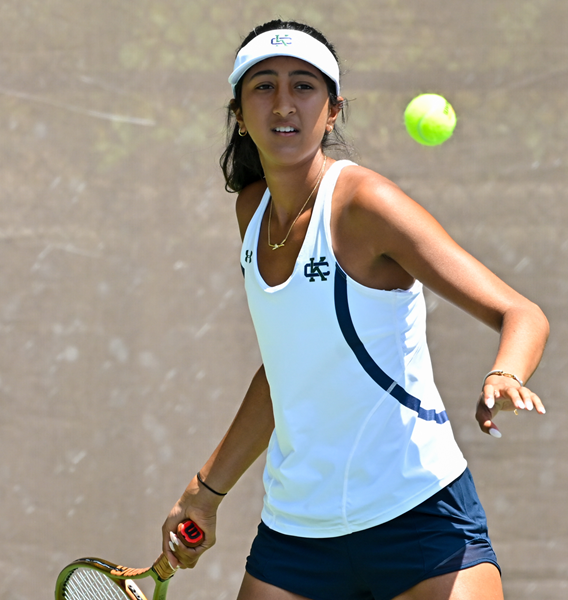
Casting Lines for Future Tournaments
August 12, 2016
By Jack Roberts
MHSAA Executive Director
The MHSAA is best known to the public for the tournaments it conducts to conclude the fall, winter and spring seasons each school year.
These tournaments, the first and largest program of the MHSAA, have survived the Vietnam War, the Korean conflict and two World Wars. They have survived the technology bubble, the housing collapse, the energy crisis and the Great Depression.
MHSAA tournaments existed at the dawn of aviation and at the time of our nation’s lunar landing. Popes, presidents and governors have changed and changed again and again, and MHSAA tournaments roll on year after year.
But the sense of tradition and permanence and inevitability of MHSAA tournaments doesn’t dissuade us from asking questions about our tournaments, even some of the most basic questions. Here are two.
Question #1
I have long been and will always be an advocate for a Ryder Cup format for the MHSAA Golf Finals, and a team tennis approach to the MHSAA Tennis Finals; but 90 years of tradition is hard to overcome. Might this be a more exciting format? Could it be co-ed? Could it reverse the decline in boys tennis participation, and increase girls golf participation? Wouldn’t it be fun to try?
Periodically, the International Olympic Committee requires each of the designated Olympic sports to defend its status, to state its case why the sport should remain a part of the Olympic program. Then, after a series or votes that retain one sport at a time, the IOC drops the sport that makes the weakest case. It does so to make room for one of the previously unlisted sports that makes the best case for inclusion.
This would appear to keep the existing Olympic sports on their toes, and to keep the Olympic movement fresh and reflective of modern trends in sports.
While I would not enjoy the controversy, I can see the potential for some positive results if the MHSAA were to invoke the same policy for determining the 14 tournaments it will provide for girls and the 14 for boys.
This might cause us to consider more deeply what a high school sport should look like, or at least what an MHSAA tournament sport should stand for.
On the one hand, we might be inclined to drop tournaments for those sports that involve mostly non-faculty coaches and non-school venues, or require cooperative programs to generate enough participants to support a team, or resort almost entirely to non-school funding, or cater to individuals more than teams.
Or perhaps this process would cause policymakers to forget traditional thinking and ask: “In this day and age, should we shake off traditional notions of sport and consider more where modern kids are coming from?” That might mean fewer team sports and more individual sports, more “extreme” sports like snowboarding and skateboarding, and more lifetime sports, meaning not just golf and tennis and running sports, but also fishing and even shooting sports.
Currently, MHSAA policy states that the MHSAA will consider sponsorship of a tournament series for any sport which 64 member schools conduct on an interscholastic basis as a result of action by the governing boards of those schools.
Should the only question be how many schools sponsor a sport, or must an activity also have certain qualities and/or avoid certain “defects?” What should an MHSAA tournament sport look like and stand for?
Question #2
Bristling from criticism that his association is a money-grabbing exploiter of children, my counterpart in another state said, “If we were running our programs just to make money, we would do very many things very differently.” I knew exactly what he meant.
Because we care about the health and welfare of students, because we mean what we say that the athletic program needs to maximize the ways it enhances the school experience while minimizing academic conflicts, and because we try to model our claim that no sport is a minor sport when it comes to its potential to teach young people life lessons, we operate our programs in ways that make promoters, marketers and business entrepreneurs laugh, cry or cringe.
If money were the only object, we would seed and select sites to assure the teams that attracted the most spectators had the best chance to advance in our tournaments, regardless of the travel for any team or its fan base. If money were the only object, we would never schedule two tournaments to overlap and compete for public attention, much less tolerate three or four overlapping events. If money were the only object, we would allow signage like NASCAR events and promotions like minor league baseball games.
Those approaches to event sponsorship may not be all wrong; they’re just not all right for us. And we will live with the consequences of our belief system.
During a typical school year, more than 20 percent of the MHSAA’s 2,097 District, Regional and Final tournaments lose money. Not a single site in golf, skiing or tennis makes a single penny. In no sport did every District, Regional and Final site have revenue in excess of direct expenses.
In fact, in only three sports – boys and girls basketball and football – is revenue so much greater than direct expenses overall that it helps to pay for all the other tournaments in which the MHSAA invests.
That’s right: invests. When we present our budget to our board, we talk about the MHSAA’s investment in providing tournament opportunities in all those sports and all those places that cannot sustain the cost of those events on their own. How much is this investment worth to students, schools and society?
These two are core questions that require our focus far in advance of talk about scheduling, site selection, seeding and the myriad matters that too often hijack our time and attention.

Motivation Not in Short Supply as Country Day Emerges, Avenges with Finals Win
By
Scott Hassinger
Special for MHSAA.com
June 1, 2024
KALAMAZOO - Fueled by a Finals runner-up finish last year and second-place Regional showing two weeks ago, Detroit Country Day unseated two-time reigning champion Bloomfield Hills Cranbrook Kingswood on Saturday and clinched this season’s Lower Peninsula Division 3 girls tennis championship.
Country Day totaled 33 points at Kalamazoo College's Stowe Stadium to win its first crown since 2021. Cranbrook Kingswood earned second with 29 points, followed by Chelsea (24), Bloomfield Hills Marian (22) and Ada Forest Hills Eastern (21).
"We knew coming in that either us or Cranbrook Kingswood could win this meet. I just felt like our fight and courage were excellent, and that's what happens when everything falls into place. I'm so happy for these girls," said Country Day's first-year head coach Nick Fiaschetti. "This team is incredible. Our seniors are our biggest leaders, and everyone is like a family – and when you have that combination, it makes you difficult to beat."
Country Day didn't let its latest championship chance slip through its grasp. Cranbrook edged Country Day by just two points in 2023. The Cranes (20 points) also edged the Yellowjackets (17) to win their Regional two weeks ago.
"Country Day is a very good team. It really comes down to how well players handle the pressure. The teams that stay relaxed the most generally are the one that wins a state championship,” Cranbrook coach Grant Asher said. “We came up a bit short this year, but I'm proud of our girls. They competed well from the start until the end of the season. We look forward to next season,"
 Country Day claimed flight titles at No. 1, No. 3 and No. 4 singles, along with a crown at No. 1 doubles.
Country Day claimed flight titles at No. 1, No. 3 and No. 4 singles, along with a crown at No. 1 doubles.
At No. 1 singles, Sophia Grzesiak defeated Forest Hills Eastern's Lilah Zaskowski in the final 6-1, 6-1.
"I'm just really proud of winning an individual title because it helps our quest for the team title. We lost Regionals, but I feel like it gave us the push we needed to come out this weekend and win it all," Grzesiak said.
At No. 3 singles, Helen Benjamin from Country Day topped Muskan Rekhani from Forest Hills Eastern 6-3, 6-1.
"I had to adjust my strategy to get all the balls in. I just had to be consistent and aggressive,” Benjamin said. “My approach shot and putting it away for the point are my biggest strengths. Our captains are great, and we are all very good friends and mentally strong."
At No. 4 singles, Country Day's Katie Han outlasted Cranbrook's Olivia Zhang 3-6, 6-2, 6-4.
The Yellowjackets’ No. 1 doubles combination of Marin Nolander and Peja Liles edged Chelsea's duo of Meghan Bareis and Haley Hopkins 4-6, 6-1, 6-1.
"They came out strong and aggressive and we found our momentum in the second set," Norlander said.
"We played our game and had fun. Our net play really helped us out as well," Liles added.
Chelsea unseeded sophomore Samantha Bieber downed Country Day's top-seeded Quinn Norlander 3-6, 6-3, 6-2, to win No. 2 singles.
"(Norlander) seemed to be struggling with balls hit to her backhand, so I decided to take advantage of that,” Bieber said. “My groundstrokes are strong, and I think my endurance plays a big part in my success. Just being able to stick with it helps me in tough matches."
Bieber's high fitness level comes from being a dual-sport athlete in track & field. She competed in this weekend's Tennis Finals because it’s her primary sport, but she qualified for the Track Finals as well as a member of two Bulldogs relay teams.
"Running helps me mentally because in a race you have to keep pushing, so that helps me in tennis and it also teaches me time management," Bieber added.
Cranbrook showed its dominance in the doubles flights by winning at No. 2, No. 3 and No. 4. Sophia Kouza and Grace Zhang squeaked out a 6-3, 6-7 (5-7), 6-2 win over Chelsea's Lucy Taylor and Brenna Taylor at No. 2, and the Cranes' No. 3 tandem of Madeline Day and Sanvi Upadhyayula were victorious over Marian's Audrey Agbay and Yana Higgins 6-7 (3-7), 6-4, 6-3. Cranbrook's No. 4 junior duo of Michelle Chen and Jessica Hall defeated Marian's Laura Higdon and Stella Glorio 6-2, 6-3.
"We had a lot of highs and lows today," Day said. "Our camaraderie helps keep our spirits up even when one of us is down."
PHOTOS (Top) Detroit Country Day’s Marin Norlander prepares to serve during a No. 1 doubles match Friday. (Middle) Cranbrook Kingswood’s Kayli Lala returns a volley during her No. 1 doubles match. (Click for more from High School Sports Scene.)

